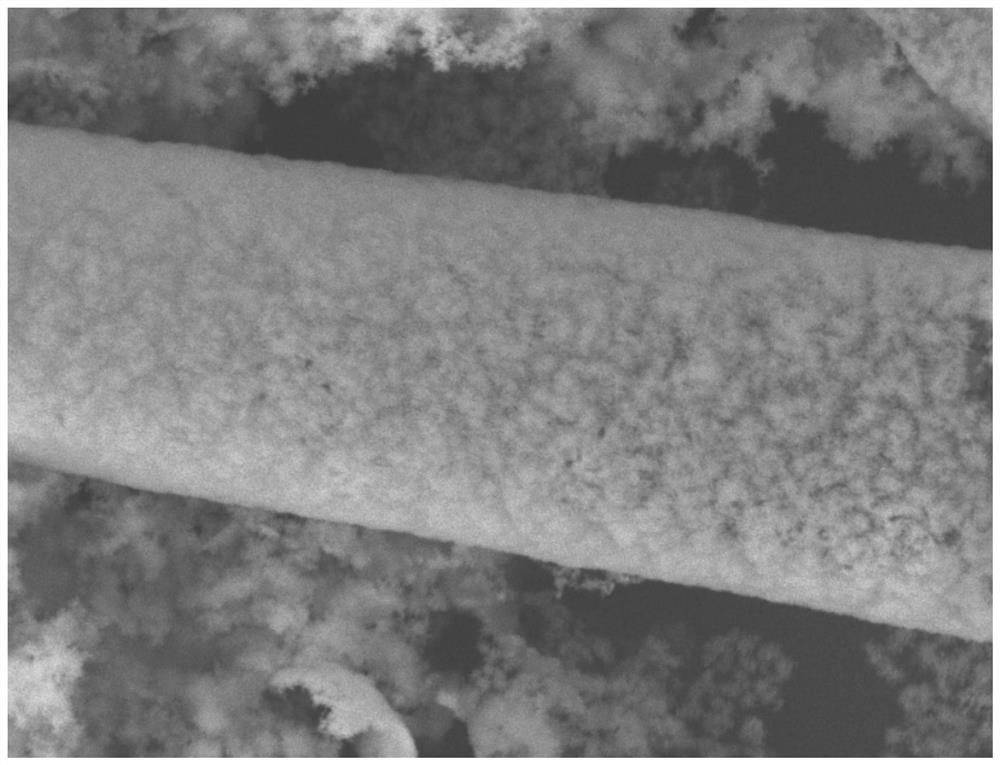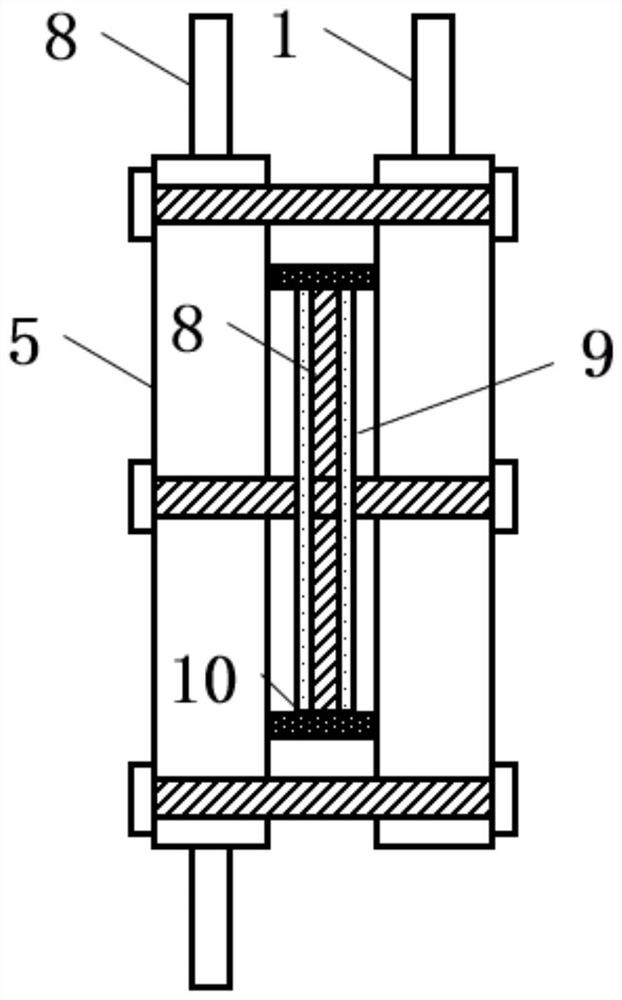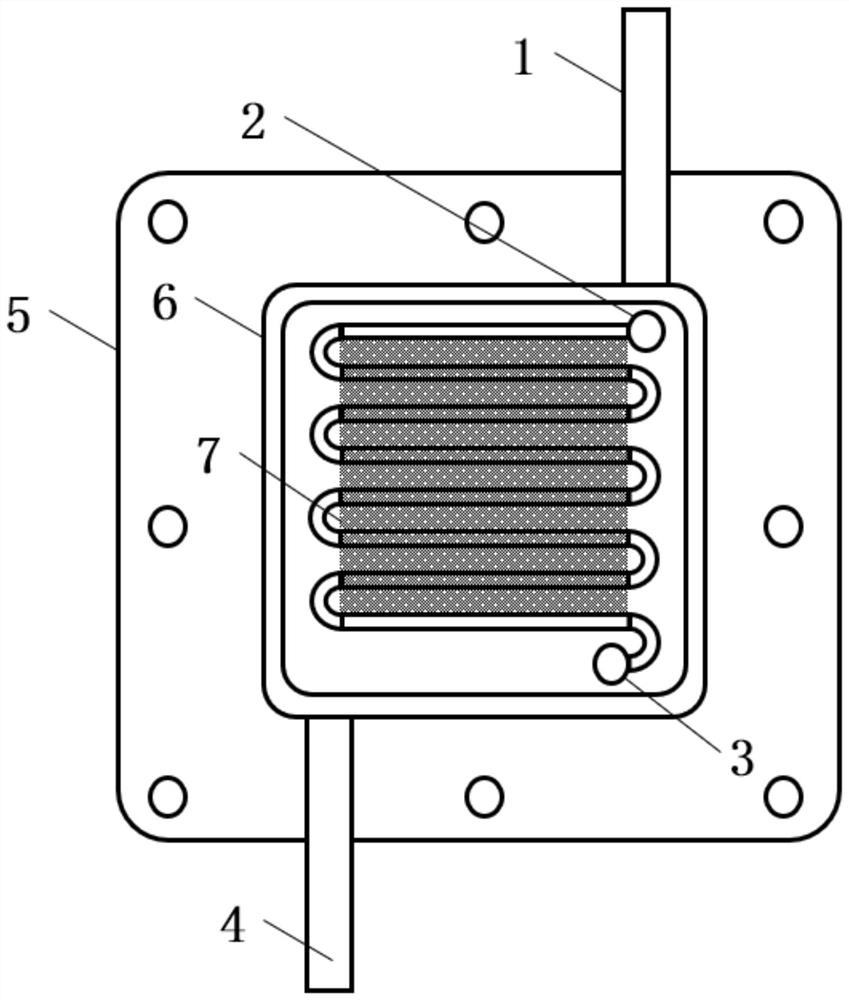A method for detecting endotoxin concentration in biochemical tail water by using nanotube membrane pressure difference
A nanotube membrane and endotoxin technology, applied in the field of environmental pollution monitoring, can solve the problems of expensive equipment, no shielding ability, large volume, etc., and achieve the effect of improving accuracy and reducing errors
- Summary
- Abstract
- Description
- Claims
- Application Information
AI Technical Summary
Problems solved by technology
Method used
Image
Examples
Embodiment 1
[0027] A method for detecting endotoxin concentration in biochemical tail water by using nanotube membrane pressure difference, comprising the following steps:
[0028] Firstly, the platinum nanotube membrane is prepared, and the polycarbonate porous membrane with uniformly distributed nanopores and a pore size of 5 nm is fixed on the membrane and plated with silver in a physical vapor deposition vacuum system, and then the polycarbonate porous membrane is coated with potassium chloroplatinate. Plating by chemical method, and then releasing the polycarbonate porous membrane with dichloromethane to obtain the completed platinum nanotube membrane for subsequent membrane cell assembly, and then clamping and fixing the platinum nanotube membrane with double-sided support layers In the flat nanofiltration membrane tank, the upper plate water inlet channel, the upper plate flow channel and the upper plate water outlet channel are arranged in the flat nanofiltration membrane tank, and...
Embodiment 2
[0033] The endotoxin in the secondary biochemical effluent of a sewage treatment plant in Beijing was measured by the method in Example 1. Since the water sample contained more suspended particles, the water sample was stored at 4°C after collection After 24 hours, the particles were completely precipitated and processed. The HLB column was used to purify the water sample. After removing the heat source interference, the peristaltic pump was injected into the membrane pool at a flow rate of 0.1mL / min, and the measured transmembrane pressure difference Compared with the endotoxin concentration measured by LAL method, the results are as follows (see Figure 4 ):
[0034]
Embodiment 3
[0036] The method in Example 1 is used to measure the endotoxin in the secondary biochemical effluent of a sewage treatment plant in Beijing. Other operating methods are similar to Example 2, and will not be repeated. The measured transmembrane pressure difference is compared with that measured by the LAL method. The endotoxin concentration was compared, and the results are as follows (see Figure 4 ):
[0037]
PUM
| Property | Measurement | Unit |
|---|---|---|
| pore size | aaaaa | aaaaa |
Abstract
Description
Claims
Application Information
 Login to View More
Login to View More - R&D
- Intellectual Property
- Life Sciences
- Materials
- Tech Scout
- Unparalleled Data Quality
- Higher Quality Content
- 60% Fewer Hallucinations
Browse by: Latest US Patents, China's latest patents, Technical Efficacy Thesaurus, Application Domain, Technology Topic, Popular Technical Reports.
© 2025 PatSnap. All rights reserved.Legal|Privacy policy|Modern Slavery Act Transparency Statement|Sitemap|About US| Contact US: help@patsnap.com



